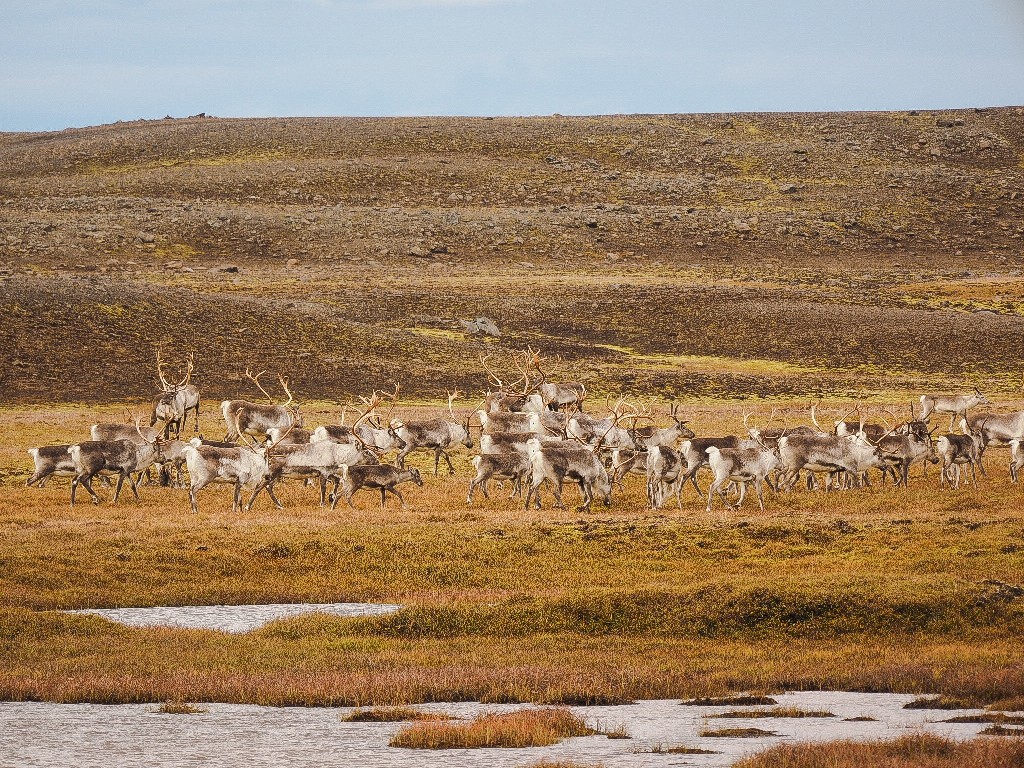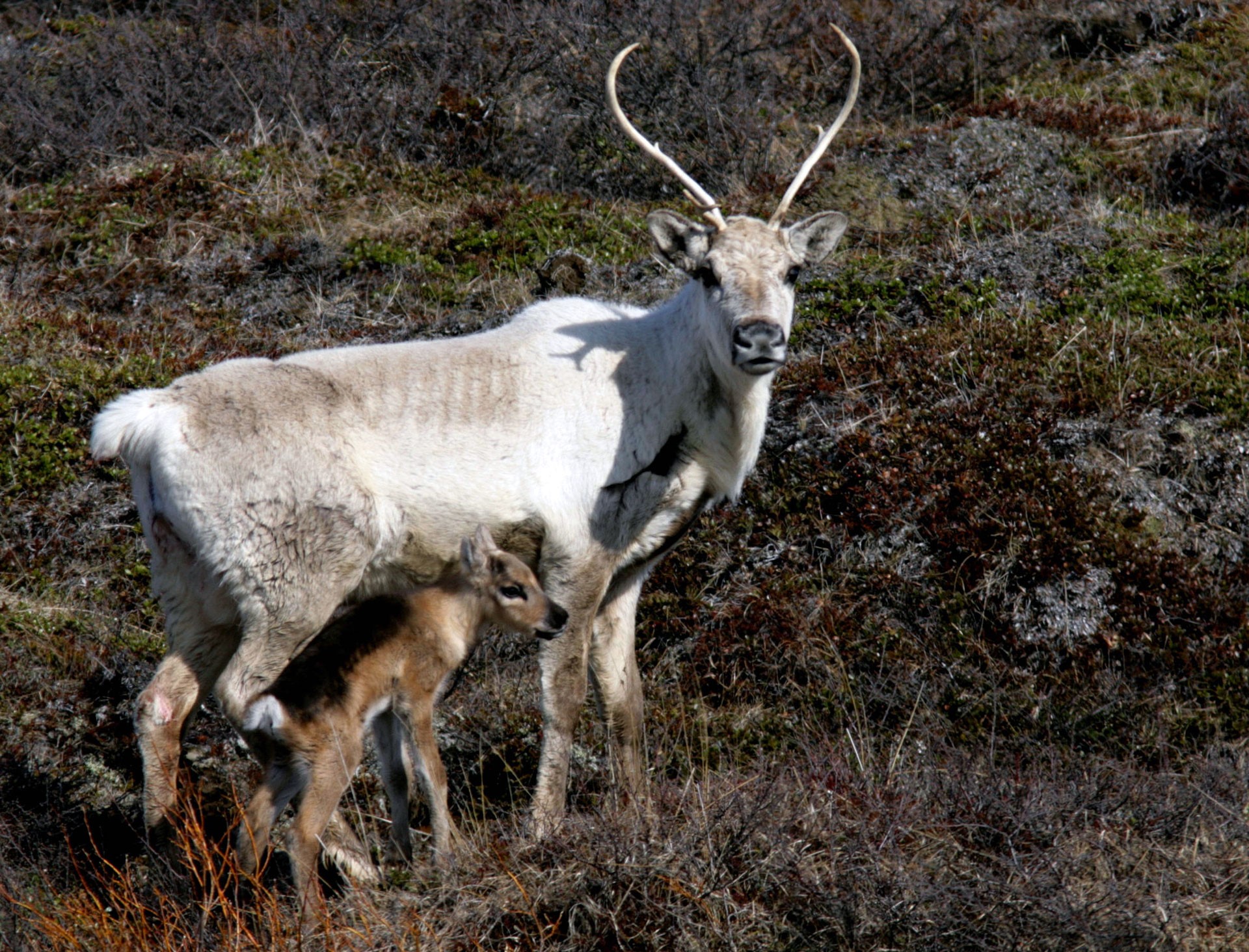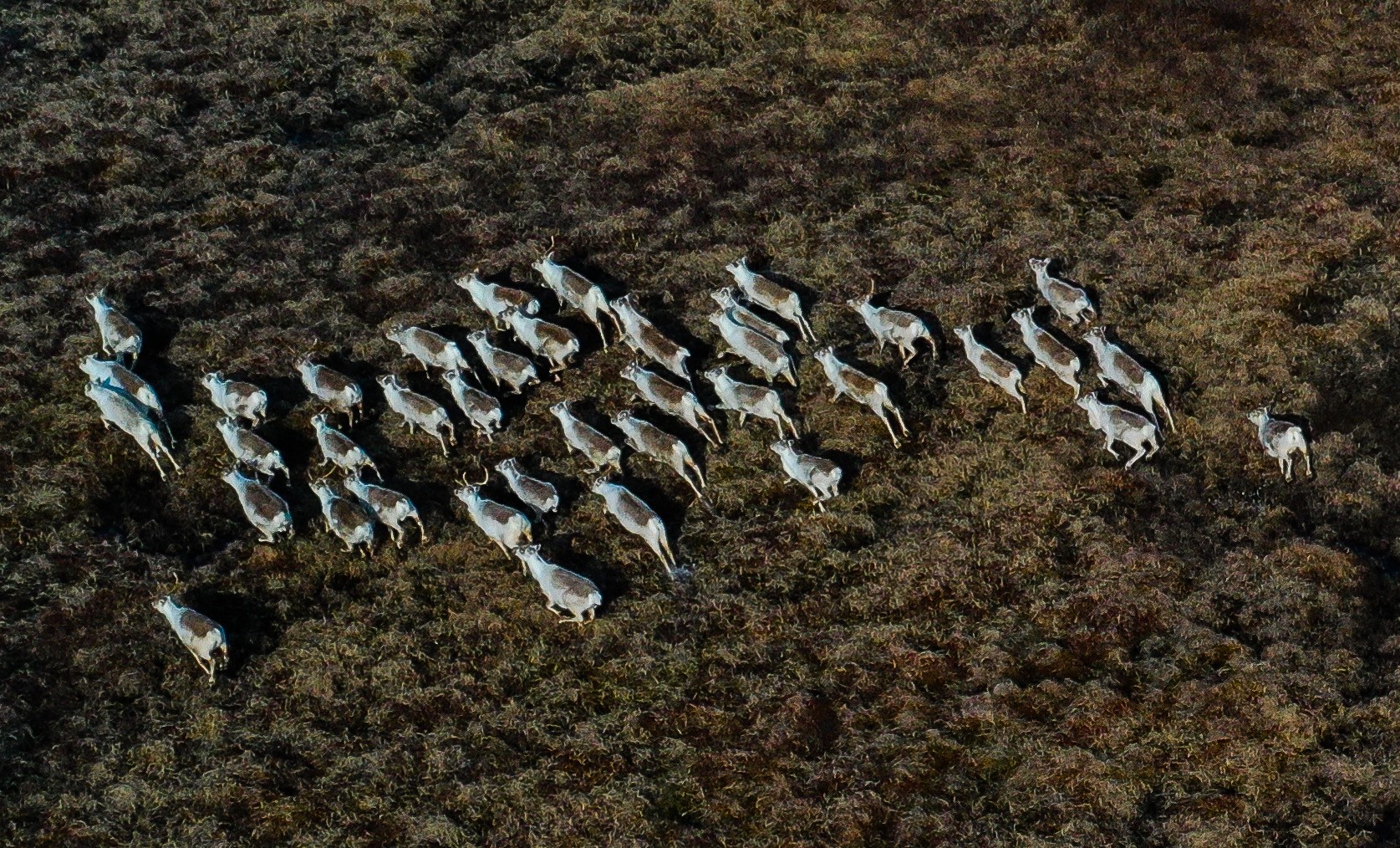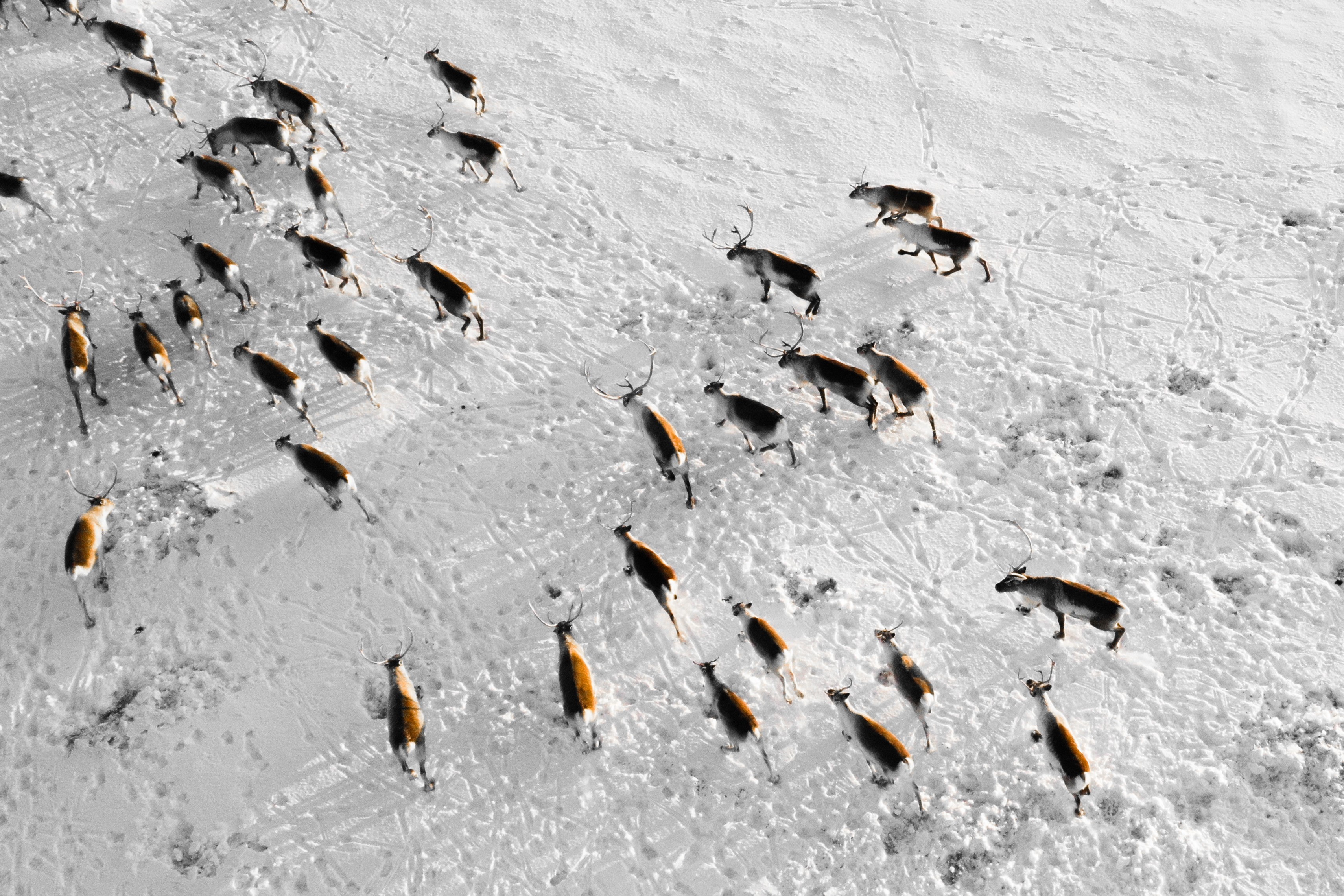
Reindeer (Rangifer Tarandus) are the largest wild, land mammals in Iceland and like most mammals in Iceland, they are not native to Iceland. They are a relatively new addition to the wild mammal fauna of Iceland. They were imported to Iceland for experimental purpose between 1771 and 1787. Four attempts were made to import them; they were released in three regions, the Southwest, North, and East. The animals came from Norway and were supposed to be domesticated here, but they have been feral from the beginning. Cold weather, harsh winters, limited food supply and volcanic eruptions made it difficult for the reindeers in Iceland and most of them died. In the year 1939 it was believed that the reindeers were almost extinct in Iceland, but after searching for a while around 100 reindeers were found in East Iceland. The current stock is believed to be their descendants. Now, they count around 6-7000 animals and can only be found in East-Iceland. Reindeer are herd animals. The size of the heard depends on the season. In winter you can often see large herds of up to a few hundred deer. But in summertime the groups are smaller, and sometimes you can even find just 1-3 male deer on their own.

The reindeers have always enjoyed more protection than other mammals in Iceland. There is a short hunting season between July 15th and September 15th every year. A special hunting quota is issued annually and is estimated for each hunting area, based on the number of animals of each gender. Around 1200 animals are annually randomly issued to applicants.
During summer, the mainstay of the stock roams around in the highlands, far away around Mt. Snæfell and the interior ranges north of the Vatnajökull glacier. In the autumn, the animals migrate to the lowlands, searching for food. This is when the calves are young and dependent on the mother and therefore need an isolated environment. This is also the time when food is sufficient, even in the highlands. For this reason, it is harder to find reindeer in the summer. In the wintertime, they come down from the highlands and graze close to the habitant of men, which makes it easier to spot them.

An adult male reindeer weights on average around 90 kg., and the female around 40 kg. They are gray on the head, back and legs but white on the belly. Their fur gives them insulation and allows them to adjust their core body temperature according to their environment. Reindeer can keep an even body temperature without increasing their metabolism up to -40°C. The reindeer are the only herd animals, where both males and females have antlers. They grow new horns each year and shed the horns between November and Mars. The only exceptions are the cows with calf’s; they shed the antlers after giving birth in May. While growing, the horns are soft and have dark flannel-like skin on them. When fully grown the horns turn hard and loose the skin. Soon after, the deer shed the antlers.
Reindeers eat many types of plants and their favorite food is lichen. During the winter, the reindeers eat whatever is the easiest to find under the snow.

